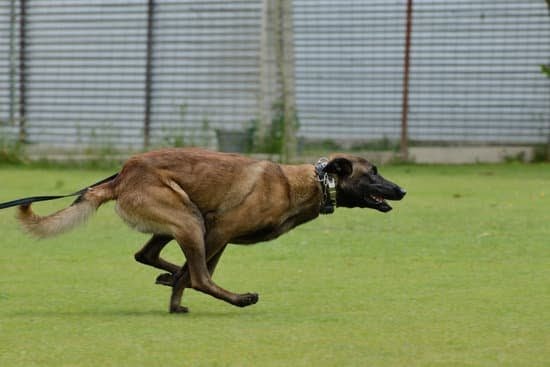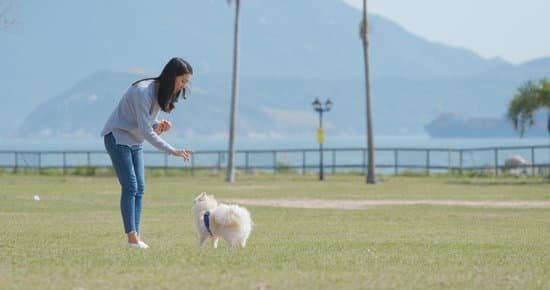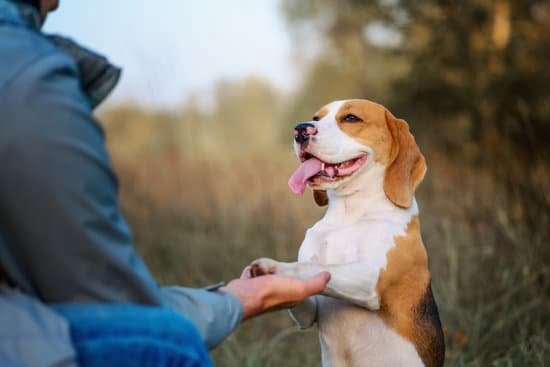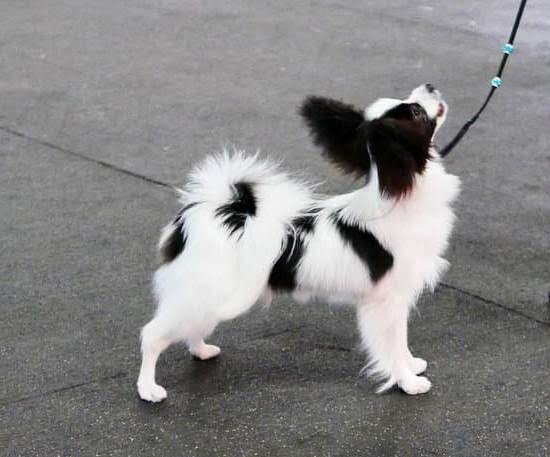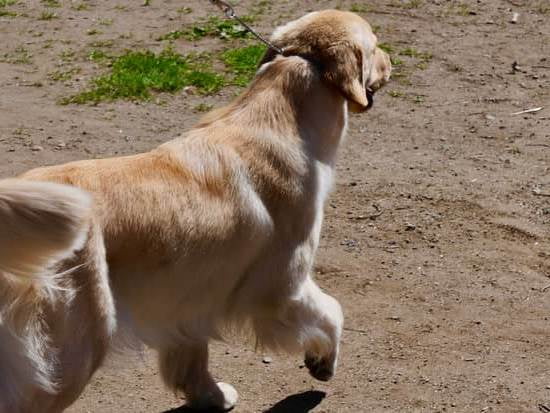Introduction
Before attempting to train a dog to bite, it is important to understand the canine instinct behind biting and think through safety precautions. Dogs in general can be unpredictable and can lash out when provoked, even if they have been trained. Therefore, it is important for handlers of these dogs to always adhere to safety guidelines when training them.
To begin with, it is recommended that handlers wear appropriate safety gear such as arm guards and bite sleeves when training dogs to bite. Doing this will help protect against any inadvertent bites or scratches from the dog during the training process. Additionally, more experienced trainers should supervise beginners who are learning how to train their dog for biting so that mistakes can be corrected before they become habits.
Another tip for safe dog biting training is to use reward-based training rather than punishment-based methods, so that the animal learns appropriate behaviors that are rewarded instead of negative actions being punished with physical action or constraints. Rewards such as verbal praise and treats may also be used in conjunction with positive reinforcement while training a dog to bite in order to adequately motivate them. Finally, it is essential that the handler works at the right intensity level for the individual dog – not too intense which could lead to aggression-inducing stress but also not too easy so as to ensure that learning takes place and behaviours are correctly imprinted on the animal’s memory.
Establishing Bite Thresholds For Different Ages and Breeds
When training your dog to bite, it is important to be aware of the different bite thresholds that should be established for different ages and breeds. Puppies and young dogs have a lower bite threshold than do adult dogs, meaning that their commands should not be as demanding. Additionally, some breeds of dogs naturally have very soft mouths with low biting forces, so there should be more patience exercised when attempting to teach them to increase their grip strength. Likewise, guard-type dogs tend to have higher levels of biting force, so there is no need to press these breeds as hard in order for them to follow commands.
In terms of age-specific considerations when teaching a dog how to bite, puppies should start with gentle bites commanded by voice and hand signals until they reach 6 months old. During this period, physical corrections could potentially damage the pup’s psychological development if used too frequently. When a pup reaches the age of 6 months or older, activities such as tugging games can help reinforce their grip and poise while building their confidence. Additionally ,during this period a pup may benefit from mild corrections if they demonstrate aggression towards people or other animals; using treats can also help strengthen obedience during bites and calm aggressive behaviors .
Finally, when teaching an adult dog how to bite safely it is important to enforce positive reinforcement rather than negative reinforcement — as an adult dog can develop defensive behaviors if harshly corrected for every repetition or mistake during training sessions. Dogs also respond better if rewards are given immediately after correctly following instructions; therefore providing treats following successful commands will make your pup more likely to listen during future lessons.
Understanding Your Dog’s Current Behavior and Comfort Level
Before attempting to train a dog to bite, it is important to first assess the animal’s current behavior and level of comfort. Observe its body language in different environments and with different stimuli. Does it seem uncomfortable when strange people approach? Is it relaxed around other dogs at the dog park? It is also important to provide the opportunity for basic obedience training before teaching a dog bite work. This helps establish trust between the dog and handler, and also allows the dog to understand its handler’s expectations. Next, introduce specific commands such as “no,” which serves as an inhibition cue that tells your dog when biting isn’t allowed. Reward good behaviors with treats or verbal praise, reinforcing what is desired behavior rather than punishing incorrect responses. Finally, use specialized bite training toys such as tug ropes and sleeves during practice sessions so you can keep track of your progress and give rewards accordingly.
Knowing When to Work with a Professional Dog Trainer
Training a dog to bite can be a daunting task for even the most experienced dog owners. This is due to the fact that teaching a dog to attack and bite on command, involves intensive training and conditioning in order to ensure the desired result. It is important that those attempting this type of training do so responsibly and carefully because there are legal implications when it comes to owning a dog that has been trained to bite.
For this reason, it is in the best interests of both pet owners and their dogs that they consult with an experienced professional trainer before beginning any kind of bite/attack dog training program. A qualified professional will help by providing advice and guidance on how best to go about training the dog while still ensuring both safety and humane treatment. Professional trainers may also have access to resources such as specialized equipment or techniques that can aid in the process. Additionally, seeking out a certified trainer is beneficial because they are knowledgeable about current regulations related to biting dogs in your locale which helps keep you compliant with laws.
Overall having proper guidance during attack/bite training can make sure you’re more likely to achieve success with your pet while also allowing for an improved relationship between you and your canine companion due to positive reinforcement methods used during instruction.
Properly Equipping Yourself for Training
Before beginning to train the dog to bite, it is important to equip yourself with everything needed for a successful training session. Make sure you have a well-fitted leash and collar that won’t cause any discomfort for your pup. You will also need treats (preferable cheese or hotdogs as these are tasty). A reward toy like a rope or squeaker can be useful when training your pup too. Additionally, make sure that you have an appropriate spot where you can practice the training without interruption (e.g., an enclosed backyard). Finally, wear protective gear such as thick gloves or arm sleeves in order to keep yourself safe while practicing this command. This way, your pup won’t harm you in any way during the training process. With all of your supplies ready, you can begin the process of teaching your dog how to bite!
Teaching Bite Commands
Bite commands are commands meant to instruct your dog to bite something or someone on command. These commands should not be used lightly and must only be done in order to keep the safety of all involved; therefore, it is important to ensure that there is a clear understanding between everyone when the command is given.
In order for an animal to successfully perform a bite command, it first needs to understand what it’s being asked for. With dogs, this means gradually introducing them to the concept of biting and doing so in a calm, controlled manner. This includes determining a safe object for the dog to bite (such as an appropriate chew toy or training sleeve), rewarding him for biting it with positive reinforcement (such as treats or praise), and then stating the word “bite” calmly while he holds onto the object. Eventually, the dog will learn to associate biting with hearing that word and will respond appropriately.
It should also be noted that some breeds may have difficulty following these commands due to breeding issues so patience and extra practice may be required in order for them to fully understand their task. Additionally, once your dog has learned how to properly respond to a bite command, further safety measures should be taken such as muzzling him outside or when visitors enter your home in order prevent any potential accidental biting incidents from occurring.
Desensitizing Techniques for Puppies and Adult Dogs
Training your dog to bite is a controversial topic among animal behavior experts. That said, it may still be useful in certain cases such as police and military work or the protection of people and property. If you choose to do so, it is essential that you use humane training methods that are based on positive reinforcement and avoidance procedures. Start by teaching bite inhibition through desensitizing exercises.
Puppies should be taught early on to refrain from biting humans during play or socialization activities. Use toys with soft surfaces like plush or vinyl as a way for them to get accustomed with their soft mouths and learn restraint. Start by gently tugging on the toy for a few seconds, then releasing it when the pup releases pressure from its mouth during the game. Then gradually increase the duration of tugs until your pup can hold onto the tug toy for longer periods of time without biting too hard or aggressively.
Adult Dogs have already developed firm bite responses which makes desensitization difficult. In this case, start by introducing new objects like towels, pillows, sticks, etc until they are desensitized to them without exerting a forceful bite. Remember not to raise your voice as this can scare your dog and make training more complicated. Once your adult dog masters abstaining from using its full bite force while playing tug-of-war with these objects; begin introducing hand instead of an object reward system to further strengthen behaviors associated with non-biting when playing with people in different scenarios. This process requires patience and consistency but it is ultimately important when teaching dogs proper bite inhibition techniques. Additionally, crate training may help reduce anxiety and other stressors which can lead to aggressive tendencies that manifest in biting behavior; making crate training an effective tool for redirecting unwanted behaviors such as biting before they occur.
Steps for Training Dogs to Bite
1. Select a Biting Toy: Choose a toy that the dog finds interesting such as an old stuffed animal. It should be something that the dog is comfortable biting into and won’t damage easily.
2. Create a Positive Association: Begin by playfully introducing the toy to the dog, and reward him when he shows interest in it or interacts with it in any way. Do this multiple times to create a positive association between the dog and the toy.
3. Pinch Grip Training: Gradually introduce harder materials such as leather or rubber to teach your pup how to bite correctly using a ‘pinch grip’. Praise your pup each time he properly bites onto the material – this will encourage him to use this same technique for other objects too!
4. Increase Intensity of Bite: Provide higher intensity toys and items for him to bite on, such as thick ropes or knotted towels, at intervals of 10-15 minutes every day or two days depending on his age and size . This will help increase his bite force as well as teach him impulse control.
5. Reduce Fear with Tugging Games: Play tugging games with your pup while rewarding him consistently with treats and verbal praise every time he releases on command. This will also help reduce fear as you have created a reward system attached to specific behaviors which can help diminish fear associated with long lasting biting situations for self-defense purposes in future if necessary.
6. End Each Session When There’s Success: After going through all these steps, make sure you end each session nicely when there is success, so no negative association links itself between the toy and puppy behavior due to stress or fatigue from continuing unsuccessful attempts towards achieving good results from training sessions. If possible, encourage positive emotional connection between human-dog interaction at the end of each successful session by giving attention and hugs for extra reinforcement/satisfaction which might lead towards long lasting trustful relationships in future!
Conclusion
Training a dog to bite carries with it a certain level of risk. Without the necessary knowledge and the right tools, a poorly disciplined dog can be a menace to not just its family but also to people in its close vicinity. That’s why it is important to grant even the most aggressive breeds like Pitbulls and Rottweilers humane training methods. It is vital that any form of biting your pet displays is quickly and firmly discouraged; this will help create boundaries as well as reward your canine for desirable behavior.
Positive reinforcement should be used when training dogs, especially for bite training. This involves providing rewards such as treats or praise when they perform desired tasks correctly, such as responding to commands or following specific directions. Doing this helps reinforce good behaviors and prevents pet owners from resorting to negative tactics which may make matters worse in the long run. To ensure success, it is important to keep practice sessions brief yet consistent so that your dog gets plenty of opportunity to learn and apply new commands without feeling overwhelmed or frustrated. Finally, understanding a pet’s psychology is key when trying to train them, so patience and early intervention are essential for success with bite training.

Welcome to the blog! I am a professional dog trainer and have been working with dogs for many years. In this blog, I will be discussing various topics related to dog training, including tips, tricks, and advice. I hope you find this information helpful and informative. Thanks for reading!

